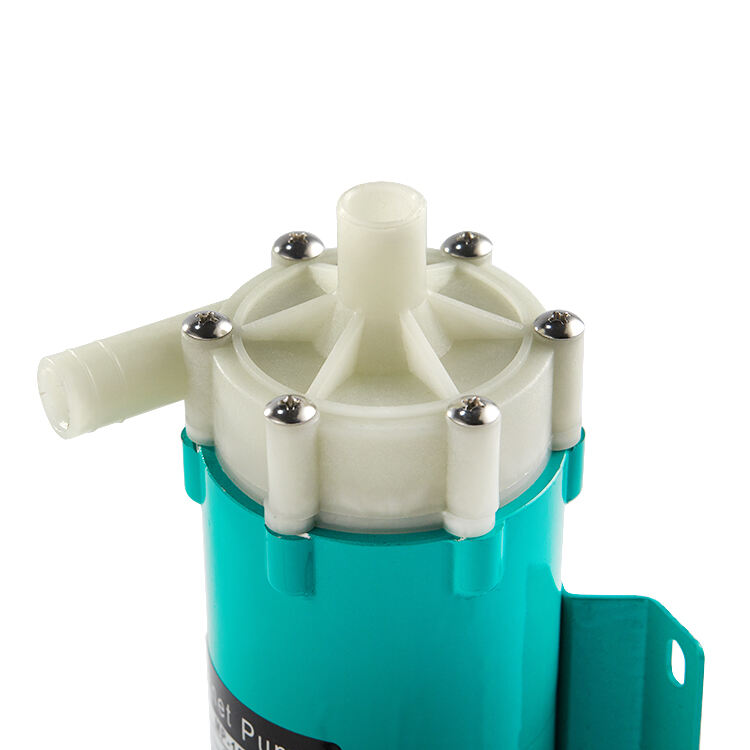Understanding the Evolution of Pump Technology in Modern Industry
The industrial pumping landscape has witnessed remarkable transformations over the decades, with magnetic pump technology emerging as a game-changing innovation. As industries face increasing demands for reliability, safety, and efficiency, the choice between magnetic pumps and mechanical seal pumps has become a crucial decision for facility managers and engineers.
The fundamental difference lies in how these systems handle the containment of pumped fluids. While mechanical seals rely on physical contact to prevent leakage, magnetic pumps utilize magnetic coupling to transmit torque without any physical connection between the motor and impeller. This revolutionary approach has reshaped how industries approach fluid handling challenges.
Core Components and Operating Principles
Magnetic Pump Technology Fundamentals
At the heart of a magnetic pump lies an ingenious design that eliminates the need for seal maintenance. The system consists of an outer magnet connected to the motor and an inner magnet attached to the impeller, with a containment shell between them. As the outer magnet rotates, it creates a magnetic field that drives the inner magnet and impeller, effectively moving the fluid without any physical connection.
The containment shell, typically made from high-strength materials like Hastelloy or ceramic, ensures complete fluid isolation while allowing magnetic force transmission. This design eliminates the weak points commonly associated with mechanical seals, making magnetic pumps particularly suitable for handling hazardous or volatile materials.
Mechanical Seal System Architecture
Traditional mechanical seal pumps operate through direct physical contact between rotating and stationary components. The seal face materials are precisely engineered to maintain a microscopic gap, which creates a fluid film crucial for lubrication and cooling. This design has served industries well for many years but comes with inherent maintenance requirements and potential failure points.
The effectiveness of mechanical seals heavily depends on proper installation, regular maintenance, and optimal operating conditions. Any deviation from these requirements can lead to seal failure, resulting in leakage and potential system downtime.

Performance Analysis and Efficiency Metrics
Energy Consumption Patterns
The magnetic pump design offers notable advantages in energy efficiency, particularly in long-term operations. While the initial power requirements might be slightly higher due to magnetic coupling, the absence of friction from mechanical seals results in more consistent energy consumption over time. This efficiency becomes particularly evident in continuous operation scenarios where mechanical seal wear would typically increase power demands.
Studies have shown that magnetic pumps maintain their efficiency levels longer than their mechanical seal counterparts, leading to more predictable operating costs and energy budgets. This aspect becomes increasingly important as industries focus on sustainability and energy conservation initiatives.
Reliability and Maintenance Factors
One of the most compelling advantages of magnetic pumps is their significantly reduced maintenance requirements. Without mechanical seals to maintain or replace, these systems can operate continuously for extended periods without intervention. This translates to lower maintenance costs and reduced downtime, making them particularly valuable in critical process applications.
Mechanical seal pumps, while proven technology, require regular maintenance schedules to prevent seal degradation and potential failures. The cost of seal replacement, associated downtime, and potential for unexpected failures must be factored into the total ownership cost comparison.
Application-Specific Considerations
Chemical Processing Industry
In chemical processing, magnetic pumps excel at handling corrosive, toxic, and volatile substances. The hermetic design ensures zero leakage, protecting both personnel and the environment. This makes them ideal for processes involving acids, bases, and other hazardous chemicals where containment is paramount.
The ability to handle high-temperature fluids without seal degradation further enhances their value in chemical processing applications. Many facilities have reported significant improvements in safety metrics and reduced environmental incidents after switching to magnetic pump systems.
Pharmaceutical Manufacturing
The pharmaceutical industry's stringent cleanliness and contamination control requirements make magnetic pumps particularly attractive. The absence of mechanical seals eliminates potential contamination points and simplifies cleaning validation processes. This design aspect has proven invaluable in maintaining product purity and meeting regulatory compliance standards.
The consistent performance and reduced maintenance requirements of magnetic pumps also support the industry's need for reliable, continuous processing operations. Many pharmaceutical manufacturers have found that magnetic pumps provide better process control and reduced risk of product contamination.
Economic Impact and Return on Investment
Initial Investment Considerations
While magnetic pumps typically require a higher initial investment compared to mechanical seal pumps, the total cost of ownership analysis often favors the magnetic option. The elimination of seal maintenance costs, reduced downtime, and lower operating expenses contribute to a compelling financial case over the equipment's lifecycle.
Organizations must consider factors such as process criticality, maintenance resources, and potential downtime costs when evaluating the investment. Many facilities report break-even periods of 18-24 months when switching to magnetic pump technology, with significant savings accumulating thereafter.
Long-term Operational Benefits
The long-term advantages of magnetic pumps extend beyond direct maintenance savings. Improved process reliability, reduced environmental risks, and enhanced safety compliance contribute to overall operational excellence. These benefits often translate into improved production efficiency and reduced regulatory compliance costs.
Organizations utilizing magnetic pumps frequently report improved worker safety metrics and reduced environmental incidents, factors that significantly impact the bottom line but are often overlooked in initial cost comparisons.
Frequently Asked Questions
How long do magnetic pumps typically last compared to mechanical seal pumps?
Magnetic pumps generally have a longer operational lifespan, often lasting 15-20 years with proper maintenance, compared to mechanical seal pumps which may require seal replacement every 2-3 years. The absence of wearing components in the sealing system contributes significantly to this extended service life.
Can magnetic pumps handle high-temperature applications?
Yes, magnetic pumps are designed to handle high-temperature applications, with some models capable of operating at temperatures up to 350°C (662°F). The key consideration is selecting the appropriate magnet material and containment shell design for the specific temperature range.
What are the main limitations of magnetic pump technology?
The primary limitations include higher initial cost, maximum temperature constraints based on magnet materials, and potential efficiency losses in high-power applications due to eddy currents. Additionally, magnetic pumps may have specific NPSH (Net Positive Suction Head) requirements that need careful consideration during system design.

